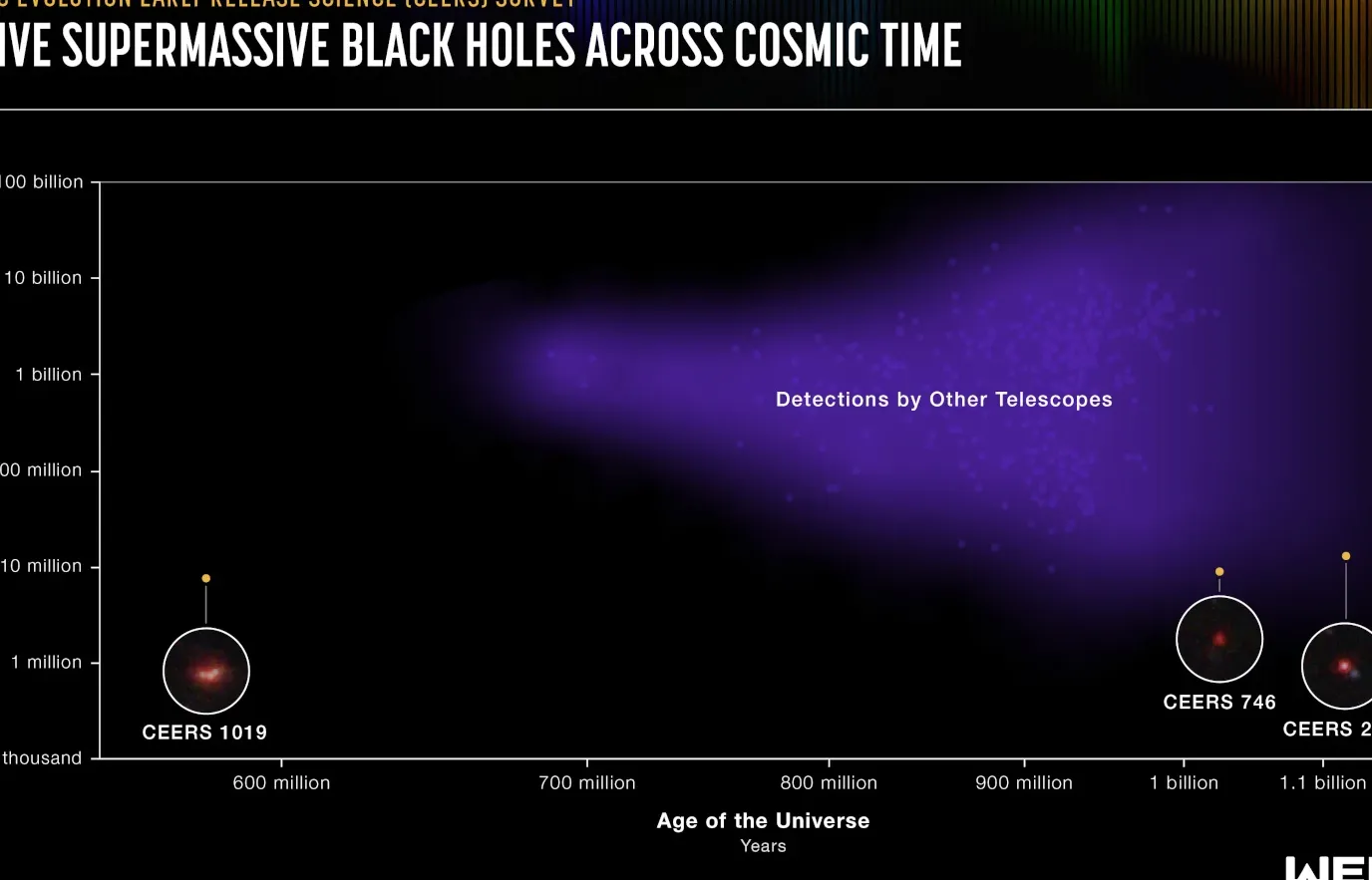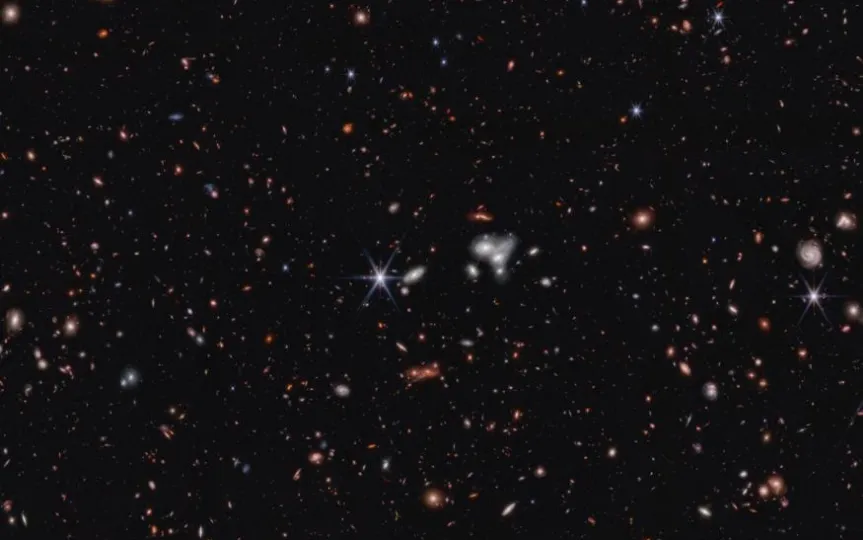James Webb Telescope Discovers Farthest Active Supermassive Black Hole
Scientists have been able to explore celestial objects that were previously inaccessible thanks to the James Webb space telescope. This includes ancient galaxies that were believed to be impossible. In a recent development, researchers involved in the Cosmic Evolution Early Release Science (CEERS) Survey have now identified the farthest active supermassive black hole ever observed.
Thanks to the near- and mid-infrared images taken by James Webb, scientists managed to find a supermassive black hole in the galaxy, which they have named CEERS 1019. They were also able to determine that the black hole has only existed for 570 million years. after the Big Bang and that it is about 9 million solar masses. In addition, thanks to the data provided by the telescope, they concluded that the black hole eats a lot of gas and squeezes out new stars. “Merging galaxies may be partly responsible for fueling the black hole activity in this galaxy, and may also lead to increased star formation,” CEERS team member Jeyhan Kartaltepe of the Rochester Institute of Technology in New York explained. In the image below, CEERS 1019 appears as three bright clumps.

This black hole is nine million solar masses smaller than other active supermassive black holes previously discovered. These celestial bodies typically contain more than a billion times the mass of the Sun, making them much brighter and easier to spot. The CEERS 1019 black hole is more similar to the black hole at the center of our galaxy, which is about 4.6 million times the mass of the Sun. NASA said scientists have known for a long time that smaller black holes must have existed earlier in the universe, but it was only after the James Webb mission that they were able to confirm their existence.
In fact, the CEERS Survey team also discovered two other ancient but small black holes through their data. The black hole CEERS 746 existed a billion years after the Big Bang, while the black hole CEERS 2782 has existed 1.1 billion years since the event. Seen through other instruments, these black holes look like ordinary star-forming galaxies. Astronomers are also currently looking at other distant black holes discovered using James Webb data, so CEERS 1019 may lose the record sooner rather than later.
CEERS team leader Steven Finkelstein of the University of Texas at Austin said: “Until now, the study of objects in the early universe has been largely theoretical. With Webb, we can see black holes and galaxies at extreme distances, but we can now begin to study them. measure them precisely. That’s the hugeness of this telescope force.”
Scientists are still struggling to explain how this black hole formed so soon after the universe began. But in the future, Webb’s data could give them the information they need to figure out how early black holes form.




